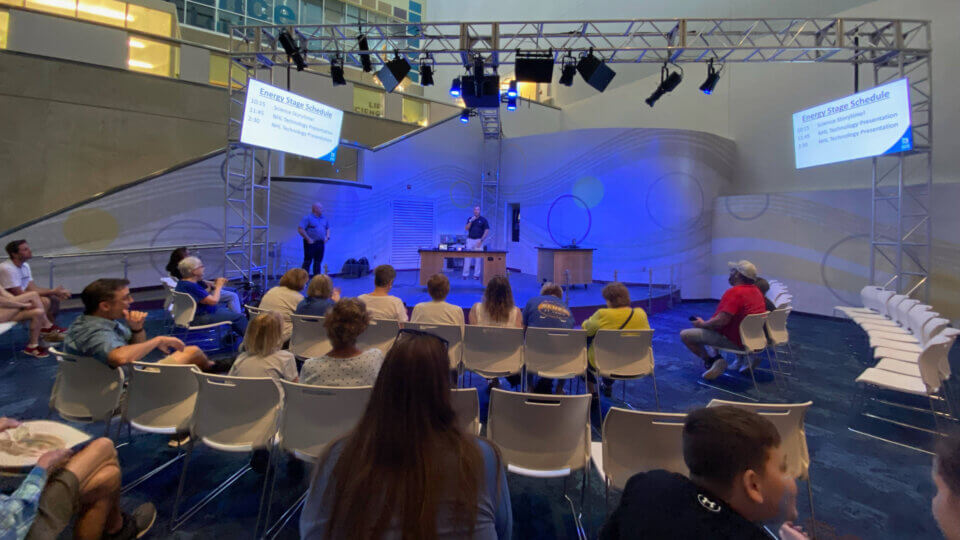September 4, 2022 Tomorrow morning, at 5:45 am, Venus will be visible in the eastern sky less than 1° west of the bright star Regulus. Regulus is a blue-white star and is the brightest in the constellation of Leo the Lion. It marks the end of the “sickle” which represents the head and mane of… Continue reading
Astronomy Fact of the Day: September 3, 2022
September 3, 2022 A first quarter moon rises today at 2:15 pm. Although the Moon is often thought of as being visible only at night, it can also be seen during the day. The Moon does not create its own light and instead reflects light coming from the Sun. Since the Moon is relatively close… Continue reading
Astronomy Fact of the Day: September 2, 2022
September 2, 2022 On this date in 1804, German astronomer Karl Harding discovered the asteroid Juno. The asteroid was initially considered a planet; however, in the 1850s it was reclassified to an asteroid. In less than a week, on September 7, 2022, Juno will reach and make its closest approach to Earth. Although Juno will… Continue reading
Astronomy Fact of the Day: August 31, 2022
August 31, 2022 The Aurigid meteor shower peaks in the predawn hours of tomorrow morning, with the best times to observe being between midnight tonight and sunrise. This shower is typically active from August 28 to September 5. This meteor shower has a peak rate of about 6 meteors per hour. Viewing from the city… Continue reading
Astronomy Fact of the Day: August 30, 2022
August 30, 2022 Tonight at 10 pm, The Summer Triangle can be seen directly overhead. This famous asterism contains the major constellations of Cygnus, Lyra, and Aquila. The minor constellations of Sagitta and Vulpecula can be found within the boundaries of the Summer Triangle. The sky as it will look tonight at 10 pm. The… Continue reading
HOCKEY: NHL Technology Presentation
On Sunday August 21, members of the NHL’s Technical Team were at the Saint Louis Science Center to discuss the evolution of technology used by players, coaches and referees to make in-game decisions. These experts showcased some of the technology used right here in St. Louis’ Enterprise Center during St. Louis Blues games. Guests had… Continue reading
Astronomy Fact of the Day: August 29, 2022
August 29, 2022 On this date in 1965, Gemini V returned to Earth following an 8-day orbital mission. Due to a programming error in their navigational computer, the astronauts had to guide the spacecraft to its splashdown manually. A recovery helicopter carries command pilot L. Gordon Cooper, Jr. from the Gemini V capsule after splashdown.… Continue reading
Astronomy Fact of the Day: August 28, 2022
August 28, 2022 On this date in 1789, William Herschel discovered Saturn’s sixth largest moon Enceladus. Herschel used his famous “Great Forty-Foot” telescope – with a 48 in diameter – for the initial discovery, and it wasn’t until the Voyager missions that humans were able to get a more detailed look at Enceladus. Voyager 2… Continue reading
Astronomy Fact of the Day: August 27, 2022
August 27, 2022 This morning at 11 am, Mercury reaches greatest eastern elongation at 27°. When Mercury is at greatest elongation, it is at its greatest separation from the Sun. Mercury will be low in the west approximately 30 minutes after sunrise. A “true” color image of Mercury taken by the MESSENGER spacecraft. Image credit:… Continue reading
Astronomy Fact of the Day: August 26, 2022
August 26, 2022 A solar eclipse occurs when the Moon passes between the Earth and the Sun. Scientists throughout history have observed solar eclipses to learn more about the Sun, the Moon, and the rest of the solar system. On June 29, 2022, the Solar Dynamics Observatory (SDO) captured images of a partial solar eclipse… Continue reading






